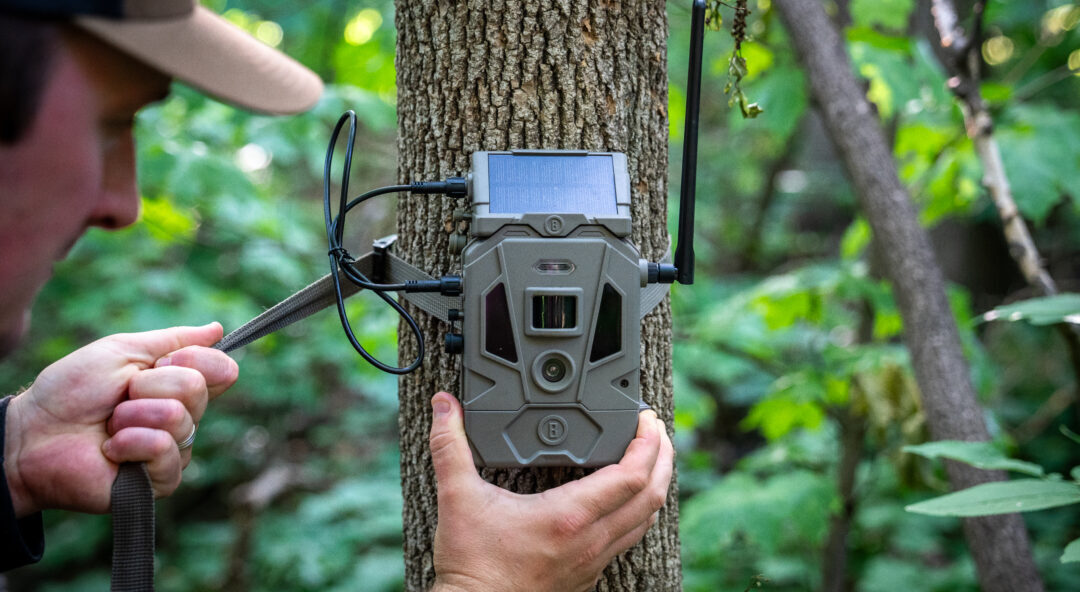In the ever-evolving landscape of outdoor surveillance, cellular trail cameras have emerged as a game-changing innovation. These devices are not just for hunting enthusiasts or wildlife researchers; they offer a dynamic solution for anyone looking to monitor remote locations with ease. Cellular trail cameras combine the robust features of traditional trail cameras with the connectivity of modern technology, allowing you to receive real-time updates no matter where you are. This fusion of high-tech functionality with practical usability makes cellular trail cameras a powerful tool for securing your property, tracking wildlife, or simply keeping an eye on the great outdoors.
Why Choose Cellular Trail Cameras Over Traditional Models?
When it comes to outdoor monitoring, the choice between cellular trail cameras and traditional models is clear. Traditional trail cameras require you to manually retrieve the SD card to view your footage, which can be a tedious and time-consuming process, especially if your camera is located in a remote area. Cellular trail cameras, on the other hand, eliminate this hassle by sending images and videos directly to your smartphone or email. This not only saves time but also ensures that you never miss a crucial moment. Additionally, the ability to monitor your camera’s activity in real-time adds an extra layer of security, making cellular trail cameras a superior choice for those who value both convenience and effectiveness.
The Evolution of Trail Cameras: From Standard to Cellular
The journey of trail cameras from standard models to cellular-enabled devices is a testament to the rapid advancements in technology. Early trail cameras were simple devices, capturing photos based on motion detection and storing them on physical media. As technology progressed, the need for more efficient, user-friendly solutions led to the development of cellular trail cameras. These modern devices not only capture high-quality images but also transmit them via cellular networks, offering instant access to the data. The evolution reflects a broader trend towards connectivity and real-time data access, making cellular trail cameras a cutting-edge solution for outdoor monitoring.
What is a Cellular Trail Camera? Understanding the Basics
A cellular trail camera is a specialized device designed for remote monitoring that sends images and videos over a cellular network. Unlike traditional trail cameras that store images on an SD card, cellular trail cameras are equipped with a SIM card and an antenna, allowing them to transmit data wirelessly. This means you can receive updates on your smartphone, tablet, or computer without needing to physically retrieve the camera. These cameras are particularly useful in remote areas where Wi-Fi is unavailable, providing a reliable way to monitor activity from afar.
How Cellular Trail Cameras Work: The Technology Behind the Scenes
The technology behind cellular trail cameras is both sophisticated and user-friendly. When the camera detects motion, it captures an image or video, which is then transmitted via a cellular network to your chosen device. The process involves several components: a motion sensor, a camera lens, a cellular modem, and a power source, typically batteries or solar power. The camera’s built-in SIM card connects to a cellular network, much like a mobile phone, allowing it to send data instantly. This seamless integration of hardware and software ensures that you receive timely updates, no matter how remote the camera’s location.
Advantages of Cellular Trail Cameras
Real-Time Monitoring: Stay Connected Anytime, Anywhere
One of the most significant advantages of cellular trail cameras is real-time monitoring. This feature allows you to stay connected with what’s happening at your camera’s location, regardless of where you are. Whether you’re tracking wildlife or keeping an eye on your property, real-time monitoring ensures you’re always informed. The instant transmission of images and videos means you can respond quickly to any situation, enhancing the overall effectiveness of your monitoring efforts.
Instant Alerts and Notifications: Never Miss a Moment
Cellular trail cameras offer the convenience of instant alerts and notifications, ensuring that you never miss a moment of important activity. When the camera detects motion, it sends an immediate notification to your device, allowing you to view the captured footage right away. This feature is particularly useful for monitoring security or wildlife, as it provides real-time updates that can be crucial for timely decision-making. With instant alerts, you can stay on top of every movement, day or night.
Remote Access and Control: Manage Your Camera from Afar
Another key advantage of cellular trail cameras is the ability to remotely access and control your device. Through a dedicated app or web interface, you can adjust camera settings, check battery levels, and review captured images or videos from anywhere with an internet connection. This remote functionality offers unparalleled convenience, especially for cameras placed in hard-to-reach areas. Whether you need to change the camera’s angle, adjust the motion sensitivity, or simply check the last captured image, you can do it all without physically being there.
Enhanced Image Quality: Capture Clearer, More Detailed Shots
Cellular trail cameras are designed to capture high-resolution images and videos, providing clear and detailed visuals of the monitored area. The enhanced image quality is a result of advanced lenses and sensors that ensure every photo is sharp and well-defined. This is particularly important for identifying specific details, whether it’s the markings on an animal or the features of an intruder. High-quality images make it easier to analyze and respond to the captured footage, improving the overall utility of the camera.
How to Choose the Right Cellular Trail Camera for Your Needs
Selecting the right cellular trail camera involves considering several factors to ensure it meets your specific requirements. Here’s what you need to know:
Key Features to Consider: What Makes a Great Cellular Trail Camera
When choosing a cellular trail camera, it’s essential to look for key features that enhance its performance and usability. These include camera resolution, battery life, connectivity options, storage capacity, and durability. A great cellular trail camera should offer a balance of these features, providing reliable and high-quality monitoring in any environment.
Camera Resolution and Image Quality: Ensuring Sharp, Clear Photos
The resolution of the camera is a critical factor that determines the clarity and detail of the captured images. Look for cameras with high megapixel counts to ensure sharp and clear photos. Higher resolution cameras are particularly beneficial for capturing detailed images of wildlife or for security purposes, where every detail counts.
Battery Life and Power Options: Keeping Your Camera Running Smoothly
Battery life is another crucial consideration when choosing a cellular trail camera. Depending on the camera’s location and usage, you may need a model with long-lasting batteries or alternative power options like solar panels. A camera with good battery life ensures continuous operation, reducing the need for frequent maintenance.
Connectivity and Signal Strength: Staying Reliable in Remote Areas
Since cellular trail cameras rely on cellular networks to transmit data, it’s important to choose a model with strong connectivity and signal strength. Cameras with better antennas and multi-network capabilities can maintain a stable connection even in remote or low-signal areas, ensuring reliable data transmission.
Storage Options: Managing Your Photos and Videos Efficiently
Consider the storage options available with the camera. Some models offer cloud storage, which allows for easy access and management of your footage. Others use SD cards, which may require more manual handling. The best choice depends on your preferences for convenience and how much data you expect to collect.
Durability and Weather Resistance: Built to Withstand the Elements
Since trail cameras are often placed in outdoor environments, they must be durable and weather-resistant. Look for models with robust construction, waterproofing, and resistance to extreme temperatures. A durable camera will continue to perform reliably, even in harsh weather conditions.
Comparison of Top Cellular Trail Cameras on the Market
When it comes to choosing the best cellular trail camera, comparing different models can help you find the one that suits your needs perfectly. Here’s a look at some top options:
Best Overall Models: Combining Performance and Value
The best overall cellular trail cameras strike a balance between performance and value. These models offer high-quality images, reliable connectivity, and durable construction, all at a reasonable price. They are ideal for users who want a dependable camera without breaking the bank.
Top Budget-Friendly Options: Great Quality Without Breaking the Bank
For those on a budget, there are several cellular trail cameras that offer excellent performance at a lower cost. These models may have fewer advanced features but still provide reliable monitoring and good image quality, making them a great choice for cost-conscious buyers.
Premium Choices: High-End Features for Serious Enthusiasts
If you’re looking for a camera with all the bells and whistles, premium models are the way to go. These cameras offer advanced features like ultra-high resolution, extended battery life, and enhanced connectivity options. They are perfect for serious enthusiasts who demand the best performance.
How to Set Up Your Cellular Trail Camera
Setting up a cellular trail camera is a straightforward process, but it requires attention to detail to ensure optimal performance. Here’s a guide to help you get started:
Step-by-Step Installation Guide: Getting Started with Ease
Begin by selecting the ideal location for your camera. This should be a spot with good visibility and minimal obstructions. Mount the camera securely, ensuring it’s stable and well-positioned. Follow the manufacturer’s instructions to insert the SIM card, batteries, and any other necessary components. Once the camera is mounted, turn it on and check the signal strength to ensure a reliable connection.
Mounting Tips: Optimal Placement for Maximum Coverage
The placement of your camera is crucial for capturing the best footage. Mount the camera at a height that provides a clear view of the area you want to monitor. Avoid placing it too high, as this may result in poor visibility of smaller animals or important details. Also, consider the direction of the sun and the camera’s field of view to avoid glare and maximize coverage.
Configuring Settings: Customizing for Your Specific Needs
Once the camera is mounted, it’s time to configure the settings. Adjust the motion sensitivity, set up the alert preferences, and choose the image resolution that suits your needs. Many cameras offer customizable settings that allow you to tailor the device’s performance to your specific monitoring requirements.
Testing and Calibration: Ensuring Your Camera is Ready to Go
Before leaving your camera to operate

